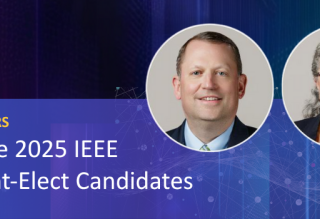Learning Nonlocal Sparse and Low-Rank Models for Image Compressive Sensing: Nonlocal sparse and low-rank modeling
Top Reasons to Join SPS Today!
1. IEEE Signal Processing Magazine
2. Signal Processing Digital Library*
3. Inside Signal Processing Newsletter
4. SPS Resource Center
5. Career advancement & recognition
6. Discounts on conferences and publications
7. Professional networking
8. Communities for students, young professionals, and women
9. Volunteer opportunities
10. Coming soon! PDH/CEU credits
Click here to learn more.
Learning Nonlocal Sparse and Low-Rank Models for Image Compressive Sensing: Nonlocal sparse and low-rank modeling
The compressive sensing (CS) scheme exploits many fewer measurements than suggested by the Nyquist–Shannon sampling theorem to accurately reconstruct images, which has attracted considerable attention in the computational imaging community. While classic image CS schemes employ sparsity using analytical transforms or bases, the learning-based approaches have become increasingly popular in recent years. Such methods can effectively model the structure of image patches by optimizing their sparse representations or learning deep neural networks while preserving the known or modeled sensing process. Beyond exploiting local image properties, advanced CS schemes adopt nonlocal image modeling by extracting similar or highly correlated patches at different locations of an image to form a group to process jointly. More recent learning-based CS schemes apply nonlocal structured sparsity priors using group sparse (and related) representation (GSR) and/or low-rank (LR) modeling, which have demonstrated promising performance in various computational imaging and image processing applications.
The compressive sensing (CS) scheme exploits many fewer measurements than suggested by the Nyquist–Shannon sampling theorem to accurately reconstruct images, which has attracted considerable attention in the computational imaging community. While classic image CS schemes employ sparsity using analytical transforms or bases, the learning-based approaches have become increasingly popular in recent years. Such methods can effectively model the structure of image patches by optimizing their sparse representations or learning deep neural networks while preserving the known or modeled sensing process. Beyond exploiting local image properties, advanced CS schemes adopt nonlocal image modeling by extracting similar or highly correlated patches at different locations of an image to form a group to process jointly. More recent learning-based CS schemes apply nonlocal structured sparsity priors using group sparse (and related) representation (GSR) and/or low-rank (LR) modeling, which have demonstrated promising performance in various computational imaging and image processing applications.
This article reviews some recent works in image CS tasks with a focus on the advanced GSR- and LR-based methods. Furthermore, we present a unified framework for incorporating various GSR and LR models and discuss the relationship between GSR and LR models. Finally, we discuss the open problems and future directions in the field.
SPS Social Media
- IEEE SPS Facebook Page https://www.facebook.com/ieeeSPS
- IEEE SPS X Page https://x.com/IEEEsps
- IEEE SPS Instagram Page https://www.instagram.com/ieeesps/?hl=en
- IEEE SPS LinkedIn Page https://www.linkedin.com/company/ieeesps/
- IEEE SPS YouTube Channel https://www.youtube.com/ieeeSPS














